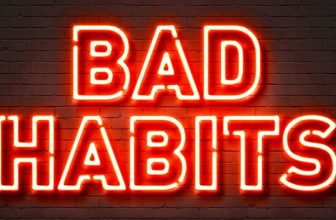
Does scoliosis affect your day-to-day life? Save your body from the stress of surgery. Start preventative exercise, stretches, and nutrition today. If you have scoliosis, you may have researched or asked a professional about surgery. It’s important to explore all your options and consider adding these preventative methods into your daily routine.
If one method aligns with your professional’s advice, you’ll save time, money, and physical stress by performing them before you resort to surgery. Find out more in Scoliosis: Treatment Without Surgery — Methods and Benefits!
Exercise
Whether you’re young or old, working out is important for all people. This includes those with a scoliosis diagnosis. Don’t believe the myth that you shouldn’t pursue exercise because of this diagnosis; you don’t have to give up physical activities that you once enjoyed. Of course, use your discretion and follow a professional’s opinion on your limitations.
Physical activity boosts mood and overall longevity. Leg exercises that involve a stability ball or walking can benefit you in the long run. However, if you endure pain, consider limiting how long you pursue an activity or find modifications for it. Speak with a professional about a custom back brace that could help you pursue healthy amounts of exercise.
Stretches Benefit those with Scoliosis
Help take the strain off your spine and enjoy the pain relief that stretching can provide you. A benefit of stretches and exercises for your scoliosis is that you can perform them from the comfort of your own home. It also acts as a preventative measure to keep your scoliosis from progressing.
Stretches will also help develop your physical muscles. In doing so, you’ll find more pressure taken off your spine. A few of these stretches include, but are not limited to, arm and leg raises, abdominal crunches, and the latissimus dorsi (or back) stretch.
Nutrition
Nutrition affects a scoliosis patient more than one may think. Patients that have a healthy BMI typically respond better to exercise, chiropractic therapy, bracing, and rehabilitation. Additionally, there’s a connection between neurotransmitters and the development of scoliosis in the body.
A diet that is rich in amino acids can encourage the neurotransmitters in a person’s body to respond as they should. Lower bone density is another risk that those with scoliosis should be aware of. Your diet should include nutrients that promote overall bone health to prevent this lower bone density. If it’s difficult to incorporate these crucial nutrients into your food, speak with a professional about appropriate supplements to add to your diet.
The methods and benefits of treating scoliosis without surgery are well worth following. Partner these tips with discipline and discuss them with a professional at your next appointment. Do you have scoliosis; how do you cope with it? Join in the discussion to promote scoliosis awareness in the comments below and on Facebook, Twitter & Instagram!









